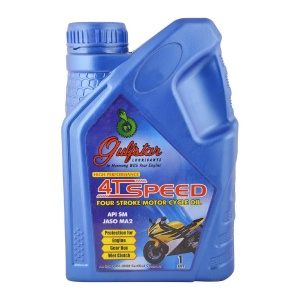Showing 1–1 of 1 results
OIL SPECIFICATION EXPLAINED: 10W30 ENGINE OIL
If you are still perplexed by seeing these cryptic numbers like 10w30 on your engine oil bottle, then let us help. 10w30 engine oil is a specific oil type suitable for a particular vehicle. To understand such numbers, you have to understand viscosity first.
Viscosity is a measure of the oil’s resistance to flow or in simple terms, its thickness. For example, water has the lowest viscosity. But when mixed with other material, it becomes more viscous. Since the engine oil is required to flow throughout the engine in both cold and hot temperatures, only the appropriate viscosity in fluids is required to keep the vehicle running smoothly.
Moreover, the engineers who design the engines in your vehicle recommend a particular oil that’s suitable to run the engine. Each engine is designed for different purposes, with different complexities. Some engines have tighter tolerances or clearances than any other, thus, the engine oil type you use significantly affects the engine performance, protection, reliability, and even fuel economy.
To understand how the name of the engine oils is created, read further.
ENGINE OIL VISCOSITY AND GRADES
When you see engine oils on the shelves of the supermarket, they often contain numbers with an alphabet. For instance “10w30 engine oil”. What does it mean?
Well, the term contains the oil viscosity in the “10w-30” number. The first number (i.e 10) is the viscosity of the oil at a cold temperature (0 degrees F or -17 degrees C). The “W” in the term stands for winter. The second number denotes the oil viscosity at a hot temperature (212 degrees F or 100 degrees C).
Thus, a 10W engine oil will flow more easily than a 20W oil when in cold temperature.
- 0W is the thinnest number.
- 5W
- 10W
- 15W
- 20W
- 25W
- 20
- 30
- 40
- 50
- 60 is the thickest.
The number in the engine oils represents multi-grade oil suitable for two different temperatures. It’s the only reason why engine oil contains two numbers. Engine oil with lower viscosities is suitable for cold temperatures because the oil is thinner. Thin engine oil flows more easily and movies quickly in the entire moving parts of the vehicle. Starting a cold engine again requires an easy flow of the engine oil to the top portion of the engine from where it runs back down.
The higher viscosity of the engine oil is used in hot temperatures because the engine often heats up during these times. However, motor oil won’t be able to thin out and keep the parts separate by forming an oil film. Therefore the number mentioned in terms like “10w30 engine oil” is to let the buyer distinguish the suitable oil for their vehicle.
BEST BUY 10W20 ENGINE OIL ONLINE FOR BIKE AND CARS
Carorbis stocks an extensive range of 10w30 engine oils, perfect for all sorts of applications. Once your vehicle handbooks let you know the right engine oil grade, we are the best place to shop at. We recommend multiple types of premium engine oil from recognized brands from across the globe. Our 10w30 engine oil is incredibly effective in keeping your vehicle running smoothly for years. The engine oil is responsible for lubricating, cooling, and cleaning the internal moving parts of the vehicle to improve its protection and maintain peak performance.
Our assortment of 10w30 engine oils is hand-picked by experts and vehicle engineers. We only offer engine oil from the brands we trust and recommend to our customers.
10W30 ENGINE OIL FREQUENTLY ASKED QUESTIONS
Q 1. What is 10W30 oil used for?
Ans. 10w30 engine oil is a multi-grade fluid suitable for heavy-load engines for its capability of withstanding hot temperatures for a long time. The oil use helps to maintain the vehicle’s performance even in harsh environments. The “10” in the term refers to the viscosity grade in low temperatures and the last number “30” in high temperatures.
Q 2. Which oil is better: 10W30 or 10W40?
Ans. 10W30 differs from 10W40 for its high-temperature viscosity. Naturally, 10W-40 is comparatively thicker than 10W-30 at a higher temperature. So if you are looking for a thicker oil, then out of these two you must pick the latter.
Q 3. What happens if you use 10W30 instead of 5W30?
Ans. If you use 5W30 instead of 10W30 at different temperatures, then it can affect your vehicle’s engine performance and service life. The 10W30 engine oil is thicker at lower temperatures compared to 5W30. Thus, it will protect the engine better than the 5W30 engine oil. If you use 10W30 in inappropriate circumstances like in a cold condition, then it’s most likely to damage your vehicle engine.
Q 4. Which is thicker: SAE 30 or 10W30?
Ans. There is a minor difference between SAE 30 and 10W30 engine oil. If we calculate the viscosity grade of both these oils at a higher temperature, it shows the same and almost acts the same. However, when calculated at a lower temperature, 10W30 engine oils perform better by turning thicker.


